Dust of These Domains (Shoalhaven) SITEWORKS, Bundanon
(2023)
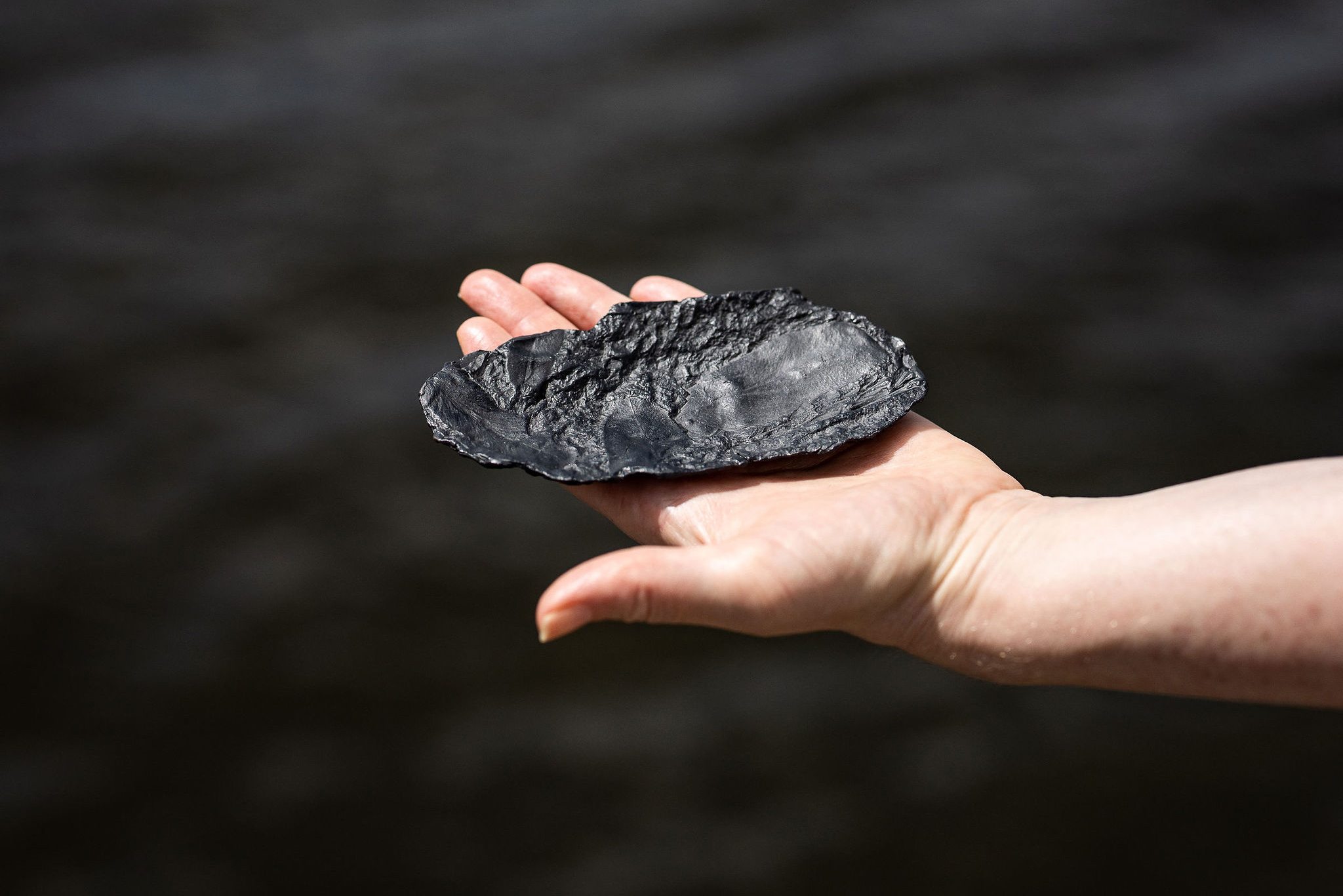
PERFORMANCE
27 February, 2023
VENUE
Siteworks festival, Bundanon
CURATED BY
Boe-Linn Bastin
PERFORMERS
Bianca Hester & Astrid Lorange
ASSOCIATED MATERIAL
Performance script
Special edition poster designed by U–P
PHOTPGRAPHY
Rachael Tagg
Involving drawing, text and objects cast from paleo-botanical fossils held in the archives of the Australia Museum, Dust of these domains involves a reading-walking performance that tracks a circuit around the grounds at Bundanon — on lands of the Dharawal and Dhurga language groups — from the lowest reaches of the Shoalhaven River to the highest accessible elevation in the Spotted Gum Forest behind the museum.
The walk pauses at four locations, while text-fragments written in response to the site are performed. Dust of these domains investigates the interdependence of colonial inheritance and extractive relations within the current climate crisis through embodied experiences within the Illawarra and Shoalhaven regions. It experiments with forms of relationality with non-human life within which human worlds are enmeshed to grapple with the instability of thought and materiality at the close of the Holocene, at an embodied, communal, and planetary scale.
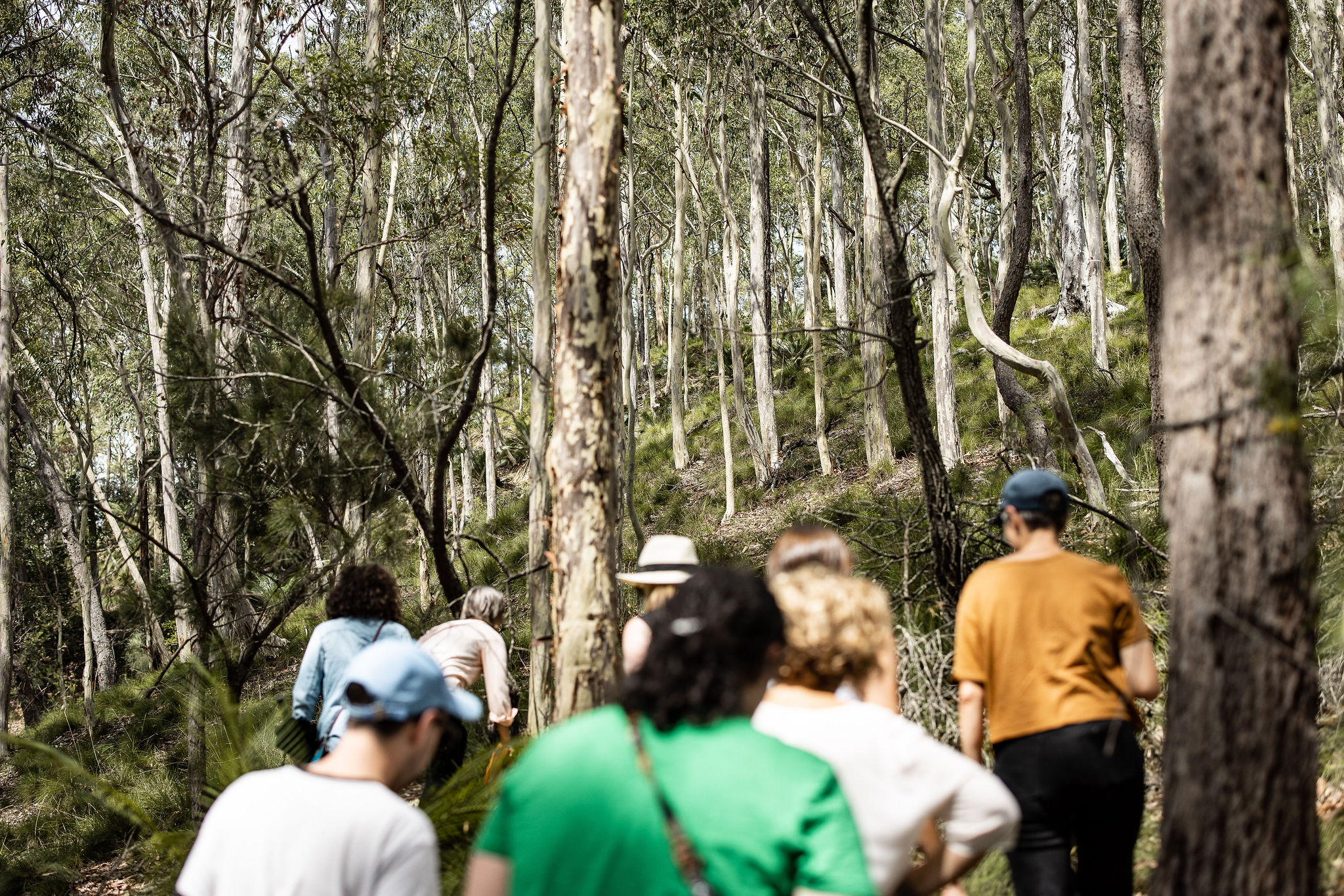
Dust of these domains is structured in 4 interrelated parts
Walk: The work is framed through a performance-walk that tracks a circuit around the grounds at Bundanon — on lands of the Dharawal and Dhurga language groups — from the lowest reaches of the Shoalhaven River to the highest accessible elevation in the Spotted Gum Forest behind the museum. The walk pauses at 4 locations, while text-fragments written specifically for the occasion are performed:
Registering: Inside the museum’s Laboratorium.
Submerging: At the Jetty on the Shoalhaven River.
Surfacing: At the top of the Budawang track, in the Spotted Gum Forest.
Airborn: On the museum’s roof, overlooking the canopy of the Eucalyptus Botryoides forest in the west.
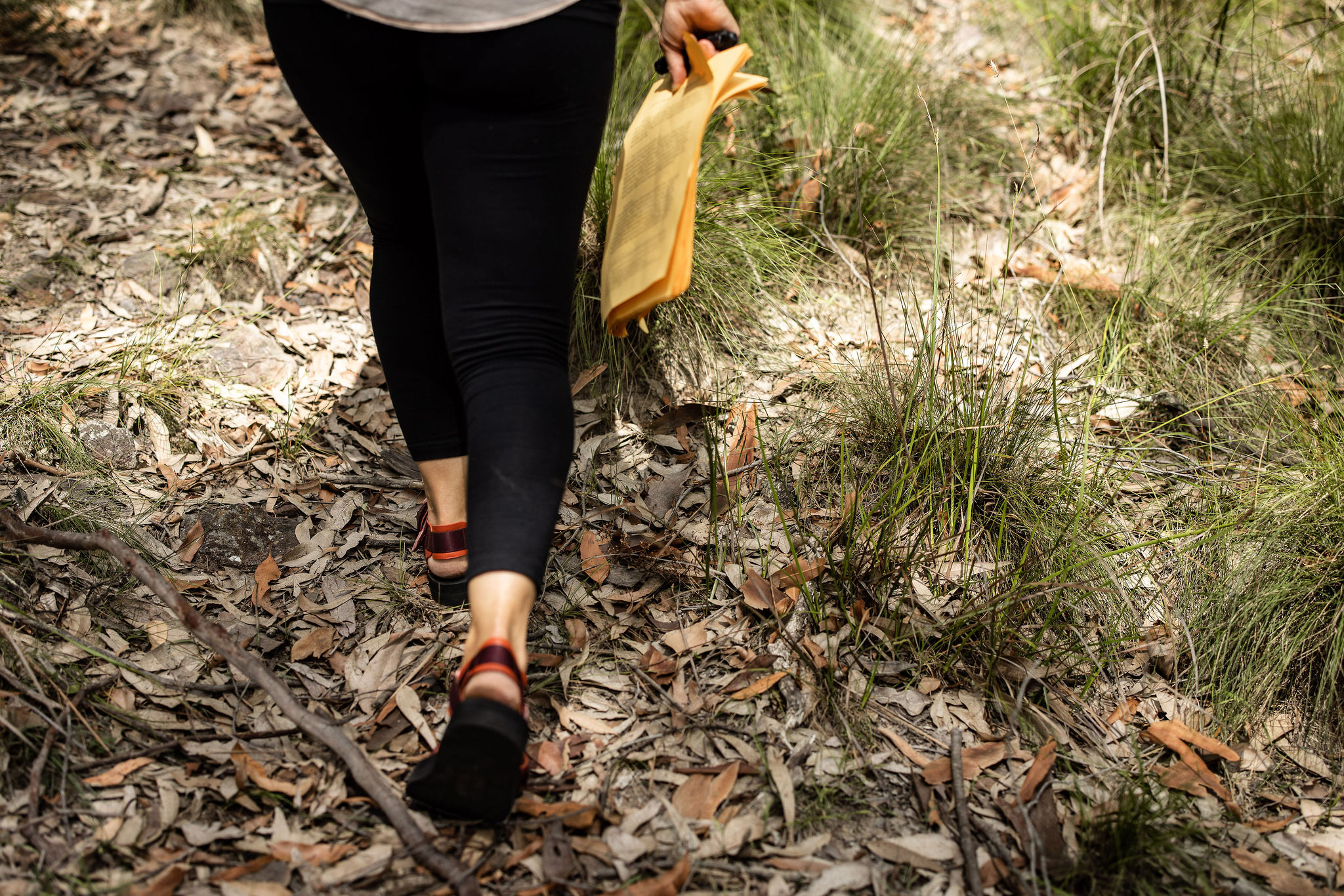
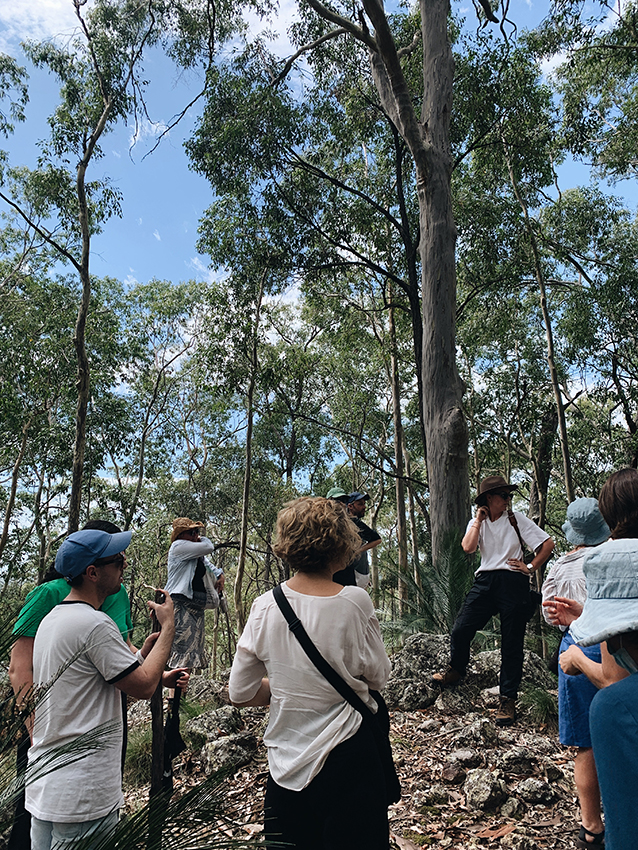
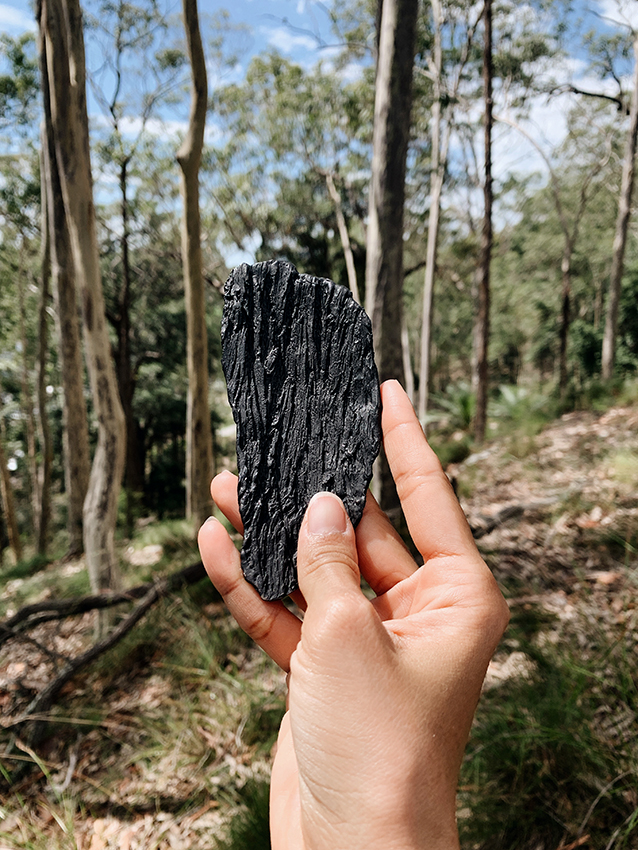
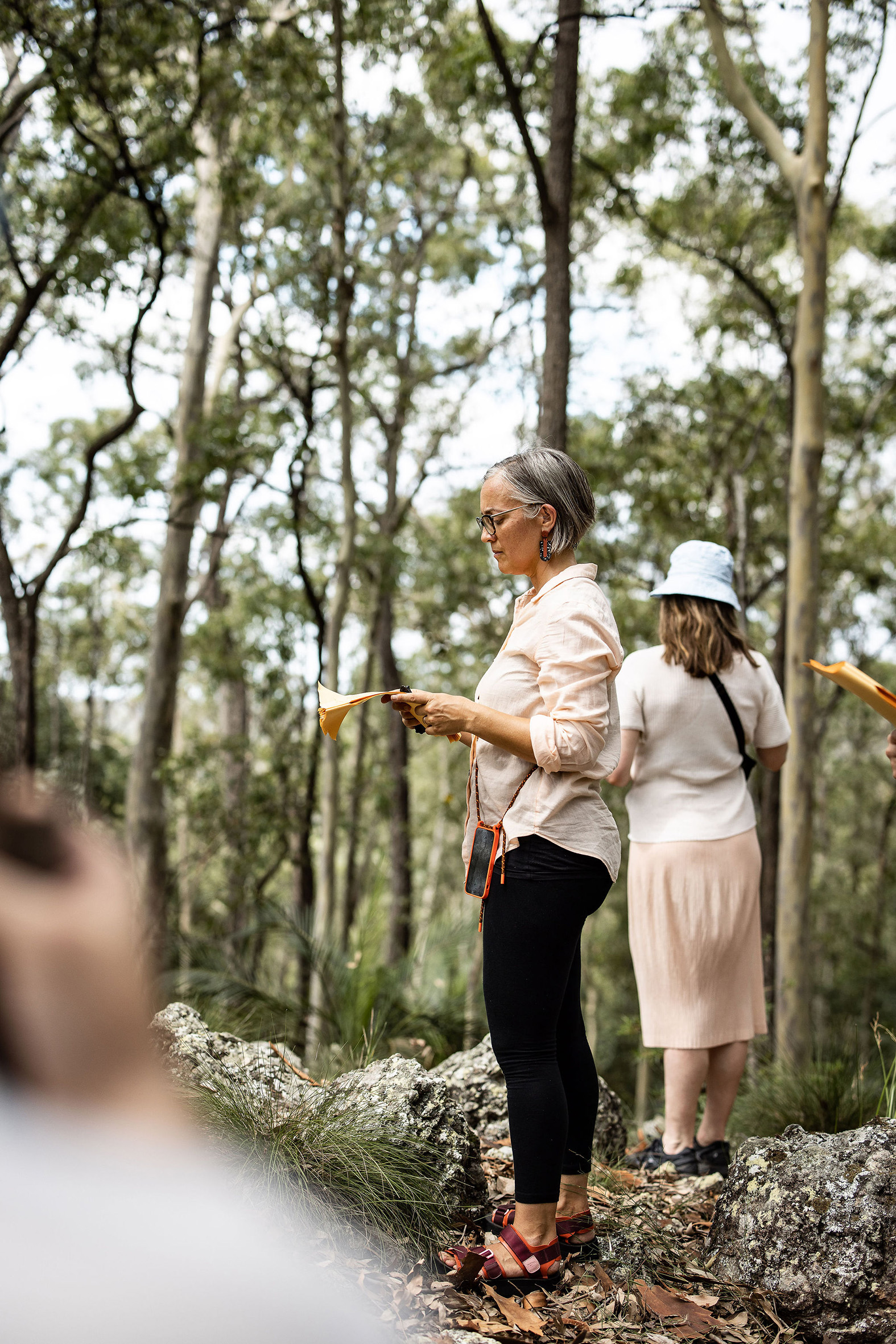
Performance objects
A set of bronze performance objects hand-moulded from wax that was worked into the crevices of silicone surfaces which were themselves pressed upon the fragments of fossils selected from the following sources: Plant fossils from the Permian and Triassic epochs held in the paleo-botanical archives of the Australia museum; My backyard in Wollongong, which sits on Permian epoch ground; Surfaces rocks from the cliffs that register the Permian-Triassic boundary and the third and largest mass extinction event on Earth; Contemporary anthropogenic surfaces at Bundanon as well as surfaces of living botanical forms found in the plant community of the Spotted Gum forest on the hill in the upper reaches of the Bundanon property. These objects are carried throughout the duration of the event, by the walking-participants.
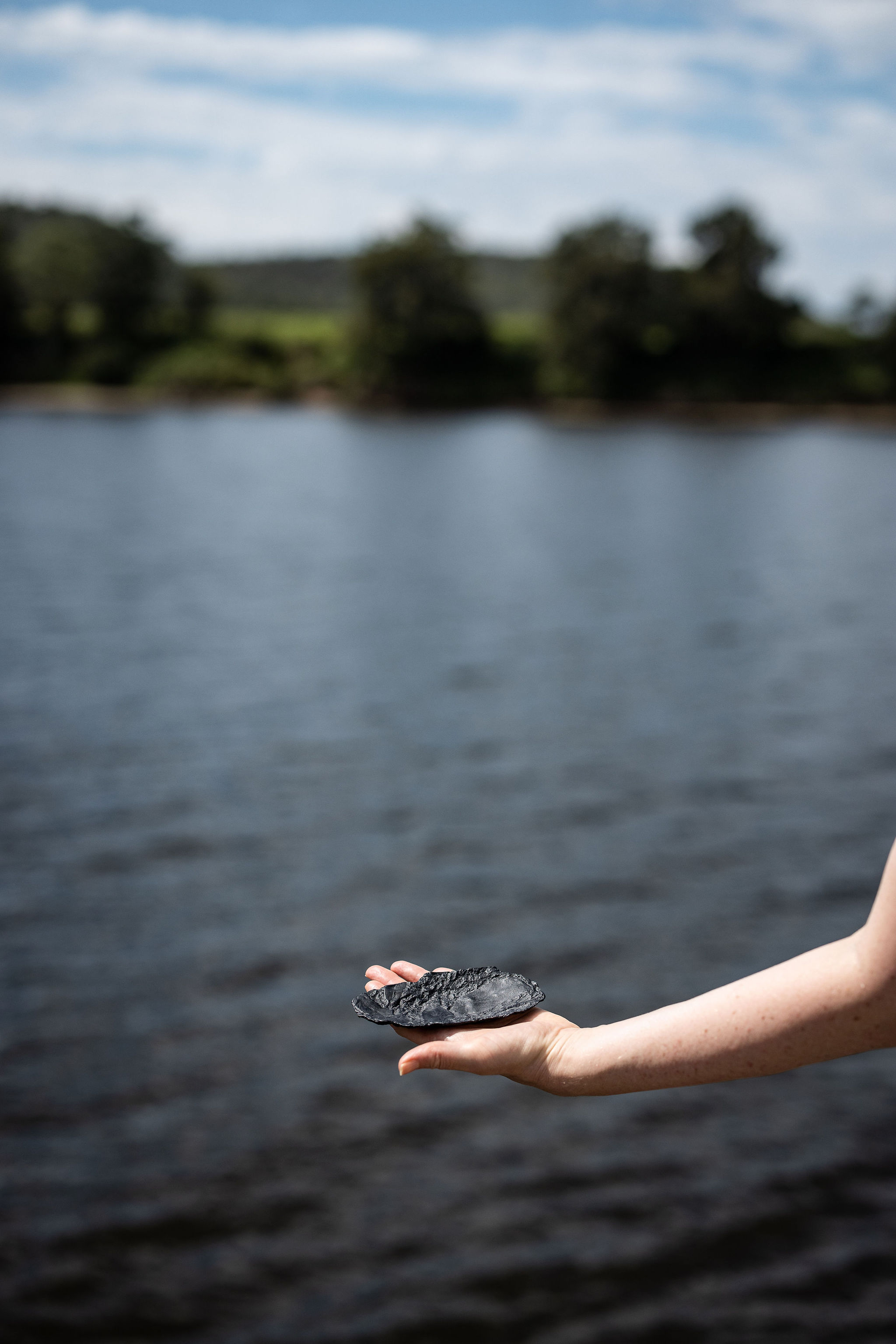
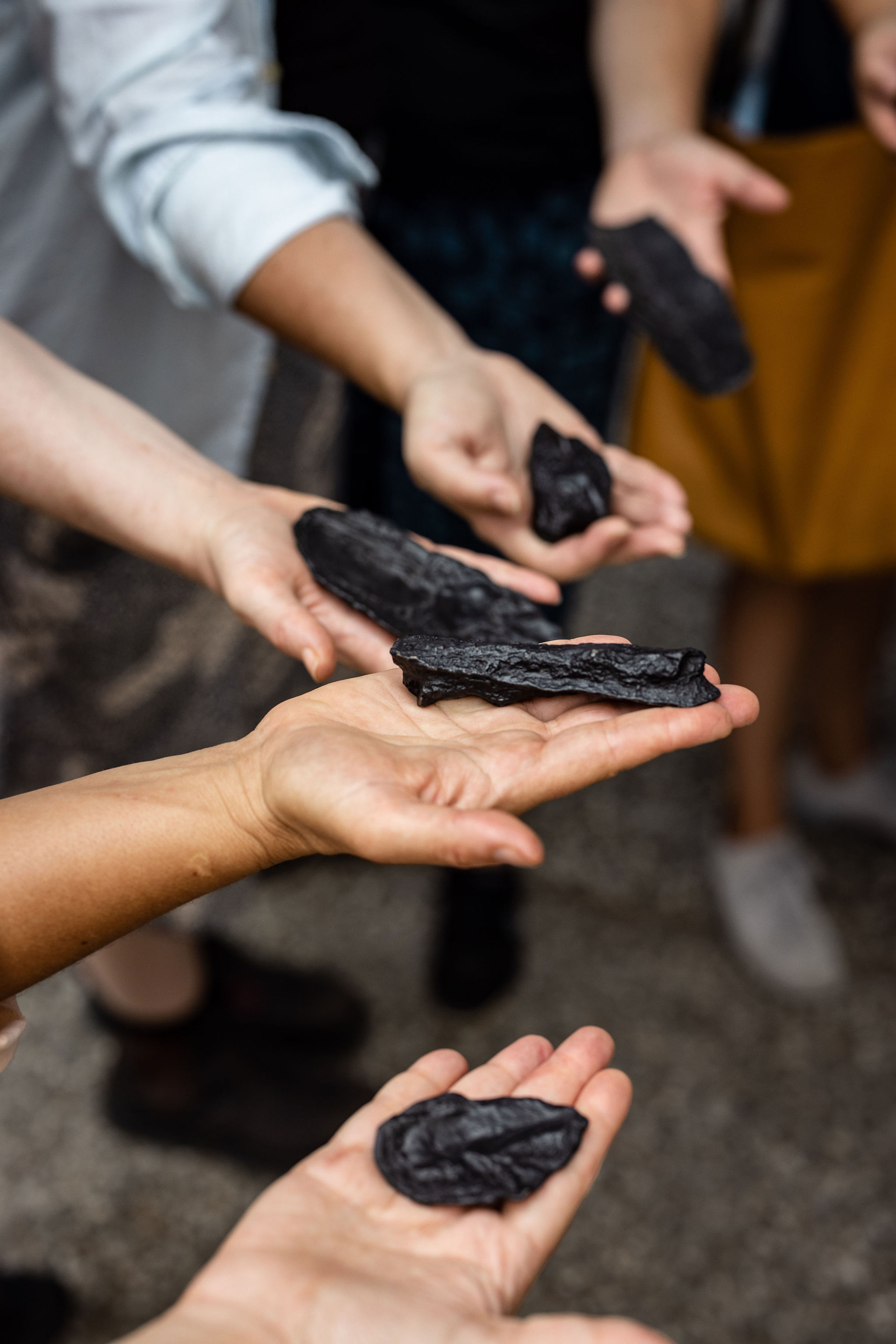
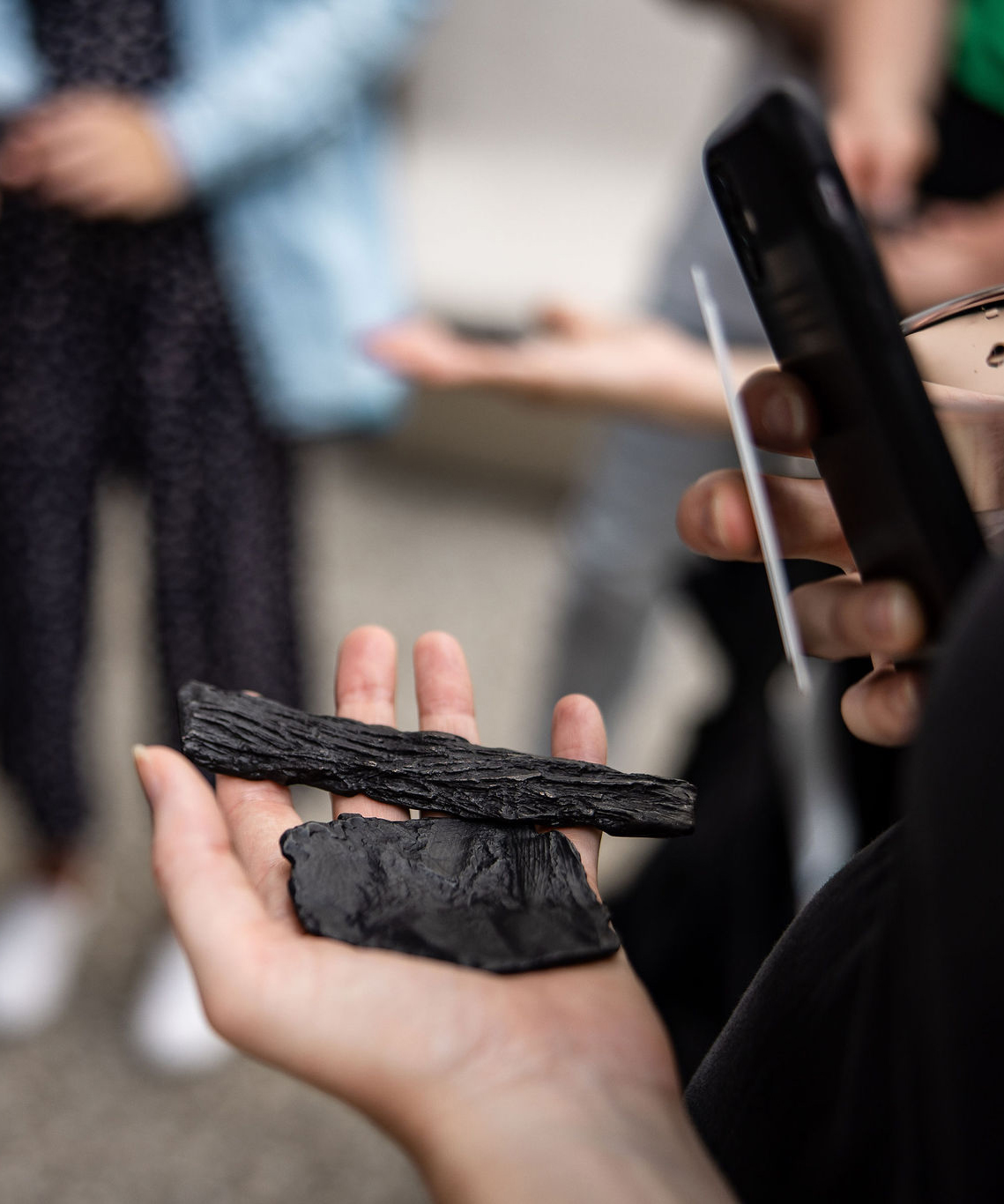
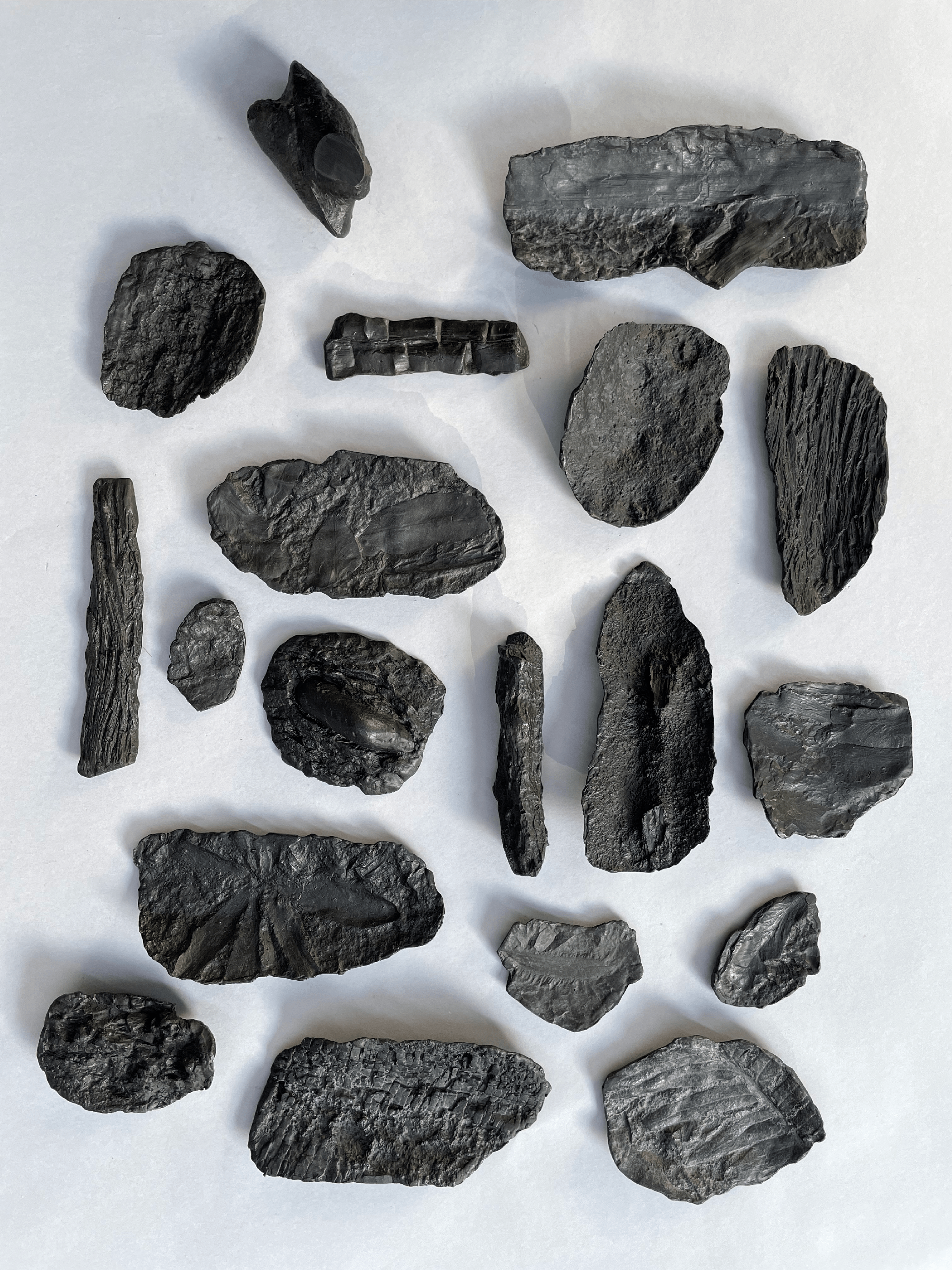
Performed texts
The texts consider the geologic residues of past environments that persist in the present, traces of extinction and regeneration that are registered in the geologic record, and the interdependence of colonial inheritance and extractive relations within the current climate crisis through embodied experiences within the Illawarra and Shoalhaven regions.
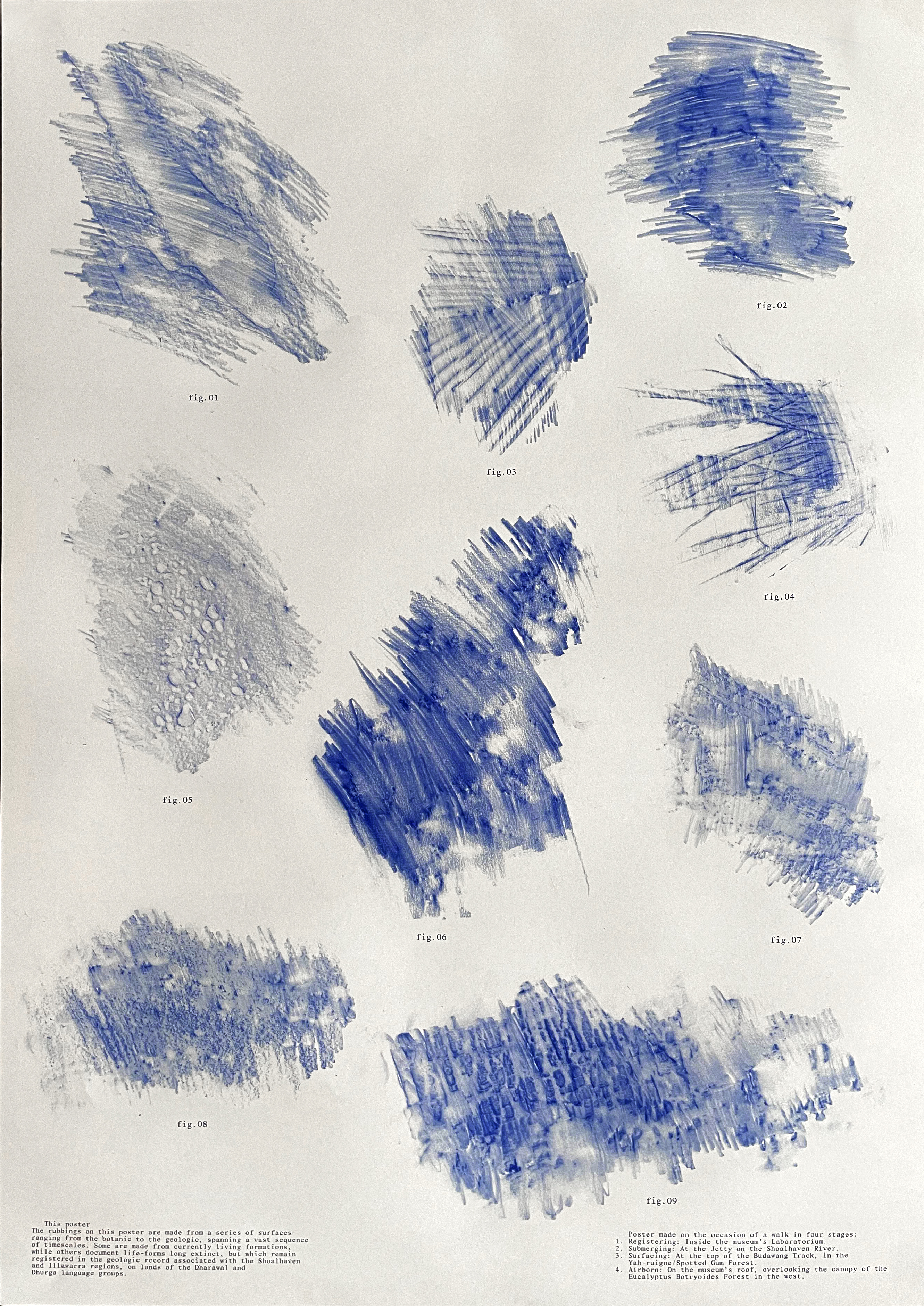
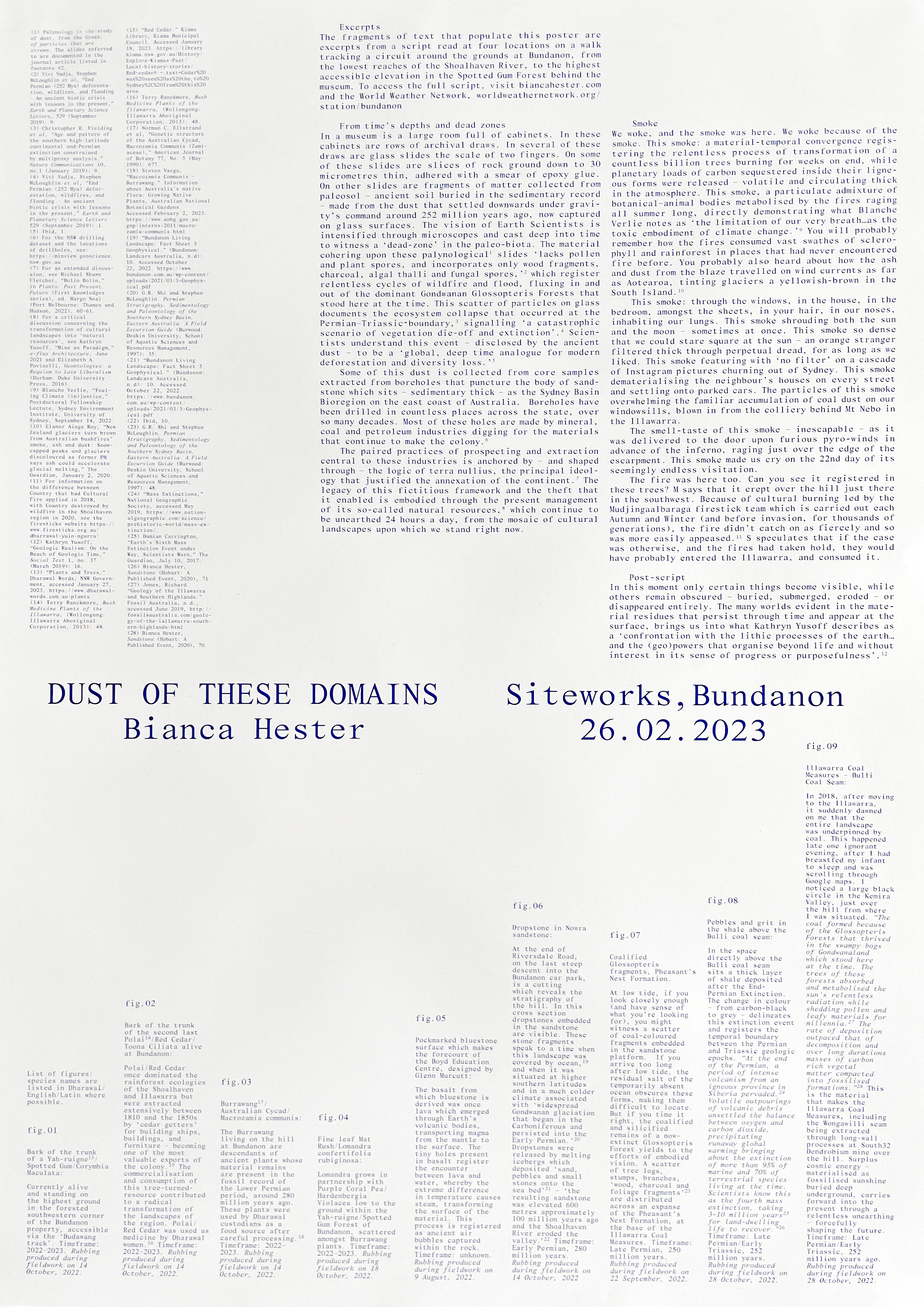
A poster
A poster made specifically for the event is composed of rubbings made from a series of surfaces ranging from the geologic to the botanical, spanning a vast sequence of timescales. Some are made from currently living formations, while others document life-forms long extinct, but which gave rise to geologic formations while remaining registered within them, such as Glossopteris leaves of Permian era forests of Gondwana.
Download copy of poster here